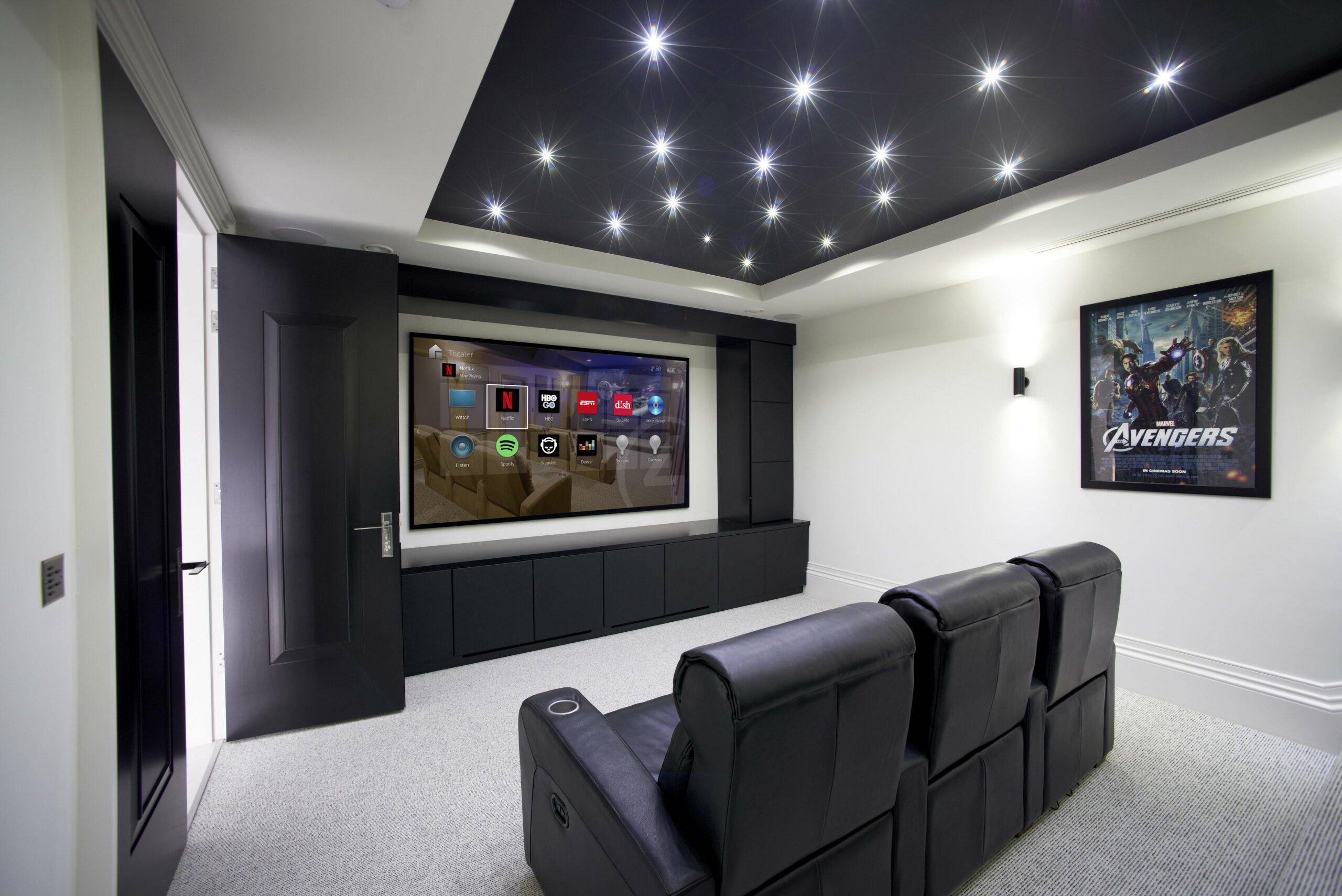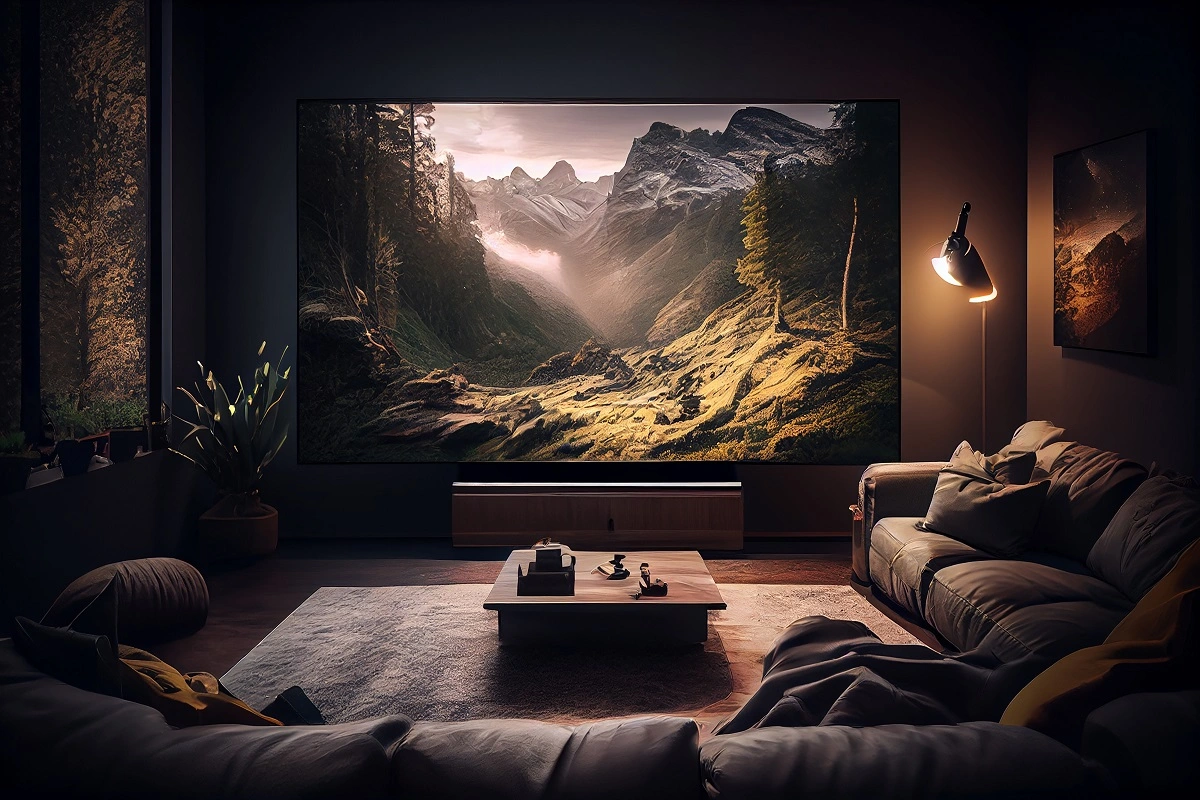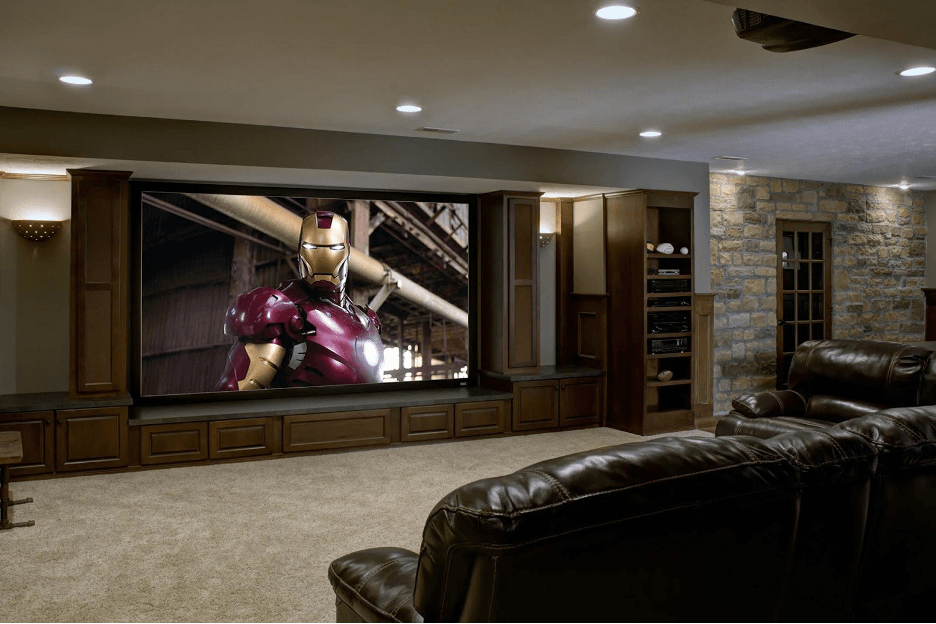Professional Tampa Home Theater Installation for a Effortless Installation
Professional Tampa Home Theater Installation for a Effortless Installation
Blog Article
Home Theater 101: Every Little Thing You Need to Know for a Motion Picture Experience in the house
Developing a home cinema that matches the cinematic experience of a business theatre includes mindful consideration of several parts, including display option, stereo, and room layout. Each aspect plays a pivotal function in attaining the desired setting and performance. Whether you are pondering the ideal screen size or the complexities of border sound, understanding these basics is essential. As we explore these crucial components, it ends up being obvious that the choices made can dramatically influence your overall viewing experience, leaving one to ponder exactly how these decisions will form your individual cinema.
Choosing the Right Screen
When establishing up a home cinema, picking the ideal screen can make or break the watching experience - home theater design tampa. The display works as the centerpiece of your configuration, affecting picture top quality, watching angles, and total visual. Secret aspects to think about include screen resolution, kind, and size
Initially, figure out the suitable display dimension based on your room measurements and seating range. A basic standard is to sit approximately 1.5 to 2.5 times the diagonal screen dimension for optimal watching. Next off, select between different display types, such as fixed-frame, motorized, or retracting displays, each offering distinctive advantages. Fixed-frame displays usually provide the finest photo quality, while mechanized options permit for versatility precede usage.
Resolution is another important variable. For a really immersive experience, take into consideration a screen created for 4K or perhaps 8K web content, guaranteeing sharpness and quality. In addition, consider the display's gain, which affects illumination and comparison; a higher gain can enhance illumination in well-lit areas, while a lower gain may be better for darker atmospheres.
Selecting Sound Equipment
Audio equipment is an important part of any type of home movie theater system, substantially enhancing the total watching experience. The choice of audio gear can establish the deepness, clarity, and immersion of audio, crucial for producing a cinematic atmosphere.
When selecting audio tools, take into consideration a border stereo, which normally includes a receiver, multiple audio speakers, and a speaker. A 5.1 or 7.1 channel system is suggested, where the initial number represents the audio speakers and the 2nd the subwoofer, offering an immersive soundscape. The receiver is the heart of the system, managing audio and video signals, and should sustain modern-day styles like Dolby Atmos for an enhanced spatial experience.
Quality speakers are crucial; seek versions that offer a well balanced audio profile with great bass action. Floor-standing speakers can create richer audio, while shelf choices save room. Additionally, take into consideration wireless choices for simplicity of installation, although wired systems frequently deliver premium performance.

Optimal Seating Arrangements
Developing an ideal home theater experience pivots significantly on optimum seating setups. The setup of seats plays an important function in both comfort and viewing top quality, straight affecting the overall motion picture experience.
First, take into consideration the display size and watching range. A typical guideline is to place seats at a distance approximately 1.5 to 2.5 times the angled size of the screen. This makes certain an immersive experience without straining the eyes.
Following, altitude is essential. The back rows must be higher than the front to stay clear of obstructions if your seats is dig this in a tiered style. For flat seats, make sure that the front row is not as well near the display, and that everybody has a clear line of vision.
Furthermore, consider the arrangement in regards to social characteristics. Group seats can boost the public experience, while individual seats may be favored for individual watching.

Lastly, prioritize comfort with ergonomic seating that sustains prolonged viewing periods. Incorporating recliners or supported seats can dramatically improve the experience, making the home cinema a preferred location for both enjoyment and relaxation.
Lighting and Atmosphere
Effective lighting and setting are important parts of a properly designed home movie theater, as they dramatically influence the seeing experience. The appropriate lighting can enhance the cinematic feeling, while inadequate selections can detract from it. For ideal outcomes, take into consideration a split lighting method that includes ambient, task, and accent illumination.
Ambient lights gives basic lighting, making certain that the space is not totally dark, which can stress the eyes. Dimmer switches are highly advised, permitting modifications based on the material being checked out. Job lights, such as wall surface sconces or flooring lights, supplies functional illumination for activities like reading or navigating the area without interfering with the total ambience.
Accent illumination can be utilized to highlight architectural attributes or develop prime focus, adding deepness and rate of interest to the space. LED strip lights behind screens or along racks can supply a subtle radiance that boosts the visual experience without overwhelming the visitor.

Wiring and Installation Tips
A well-planned circuitry arrangement is vital for achieving optimum efficiency in your home cinema system. Appropriate wiring not only makes sure high-grade sound and video signals but additionally boosts the general aesthetic of your room. Begin by mapping out your layout, recognizing where each element will be positioned, including your display, speakers, and receiver.
When picking cords, prioritize high-quality, suitably evaluated wiring to lower signal loss. HDMI cable televisions should be made use of for video links, while speaker cord ought to match the requirements of your speakers and amplifier. Select in-wall rated wires to follow safety requirements and maintain a clean appearance.

Verdict
In summary, creating an extraordinary home theater experience needs mindful factor to consider of numerous aspects, consisting of display option, audio equipment, seating arrangements, lighting, and wiring. By focusing on these factors, a motion picture discover this ambience can be effectively replicated, permitting for immersive watching experiences that match typical cinema setups.
Producing a home theater that matches the motion picture experience of a commercial theatre includes cautious consideration of numerous components, including screen selection, audio systems, and space format.When setting up a home cinema, selecting the ideal display can make or break the viewing experience. Next off, pick in between different screen kinds, such as fixed-frame, mechanized, or retractable screens, each offering distinctive benefits. For a genuinely immersive experience, think about a screen designed for 4K or also 8K material, guaranteeing sharpness and quality.In recap, creating an outstanding home movie theater experience requires mindful consideration of various elements, including display selection, audio tools, seating setups, lighting, and wiring.
Report this page